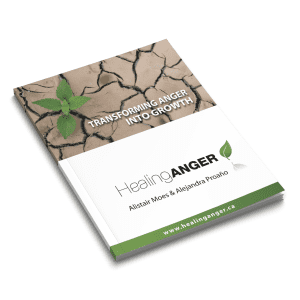Published on The Georgia Straight
by Craig Takeuchi on August 12th, 2020 at 1:00 PM
Vancouver counsellor Alejandra Proaño urges people to understand emotions that may be hidden beneath anger.
It’s an uneasy time to be named Karen.
There isn’t any shortage of online videos of Karens, a slang term for angry privileged white women verbally abusing people in racist ways or throwing tantrums about mask-wearing. There are also numerous articles highlighting this behaviour and online commenters shaming these women.
What we could use more of, however, are explanations about what exactly is going on beneath the appearance of things.
By phone, registered clinical counsellor and psychotherapist Alejandra Proaño of Healing Anger, who runs anger-management groups for women in Vancouver, suggested several contributing factors. Proaño explained that the COVID-19 pandemic lockdowns are “like going into a deep meditation that we cannot run from”. Deprived of many of our usual means of avoiding problems, such as socializing, escaping to the office, or working out , people are forced to face their own “internal landscape”, she said.
In addition, she pointed out women are participating in the #MeToo movement “telling the stories that previously we were not allowed to tell”. Add to that Black Lives Matter, which Proaño said reconnects people with racial trauma or makes some deeply uncomfortable, and the current zeitgiest is priming people to blow a fuse.
But the issue isn’t anger itself—it’s whether a person chooses to express that anger in a firm but respectful manner or in an offensive, harmful, or even sadistic way. And a survival-based physiological response complicates things further.
When someone perceives something as threatening, Proaño explained, a trauma response kicks in, and the prefrontal cortex of the brain—involved in decision-making and moderating social behaviour—switches off. She said this causes the individual to withdraw from social engagement. Tunnel vision, with black-and-white thinking, ensues. Pain receptors stop working, and fear and anxiety can prompt a shift into attack mode.
This is the point at which most people have been captured on viral videos. Yet an angry person may not understand what they’re truly feeling or trying to express.
“During this state of high arousal, you’re going to say the most horrible things,” she explained, adding that people may say or do things they might normally not.
But after the adrenaline high subsides, the body, she said, undergoes physical and emotional depletion. The prefrontal cortex also reboots, she said, and the person may feel doubt or shame.
As anger is a secondary emotion, Proaño said what may be hidden underneath could be deep feelings of loss or abandonment, emotional or physical pain, fears, shame, being unheard, a sense of inadequacy or worthlessness, or unfulfilled needs.
“The key is to talk about this,” Proaño said. If people don’t, she said, they may instead keep their feelings secret while pretending to be fine or numbing themselves with addictive behaviour, leaving their emotions unresolved.
“That is very toxic,” she said. “It is great that women are starting to speak up about their anger because if not, they will show it in a very manipulative, in a very silent way, but it’s there. It’s not productive. It’s not good for any of us.”
While anger has been the one emotion men have been traditionally permitted to express, Proaño said that women increasingly want to learn about being in charge of their own anger because women have been long denied expression of this emotion.
She pointed out that it’s not stress that’s the problem—the key is learning skills about how NOT to respond emotionally to stress.
“We need now to do a lot of work on healthy regulation of responses in the face of stressful situations,” she said.
While B.C. provincial health officer Dr. Bonnie Henry has encouraged everyone to be calm and kind during the pandemic, Proaño said it’s important to respond with compassion—not only to others but to one’s own anger. Because there’s often more to the story than what we can simply see.



